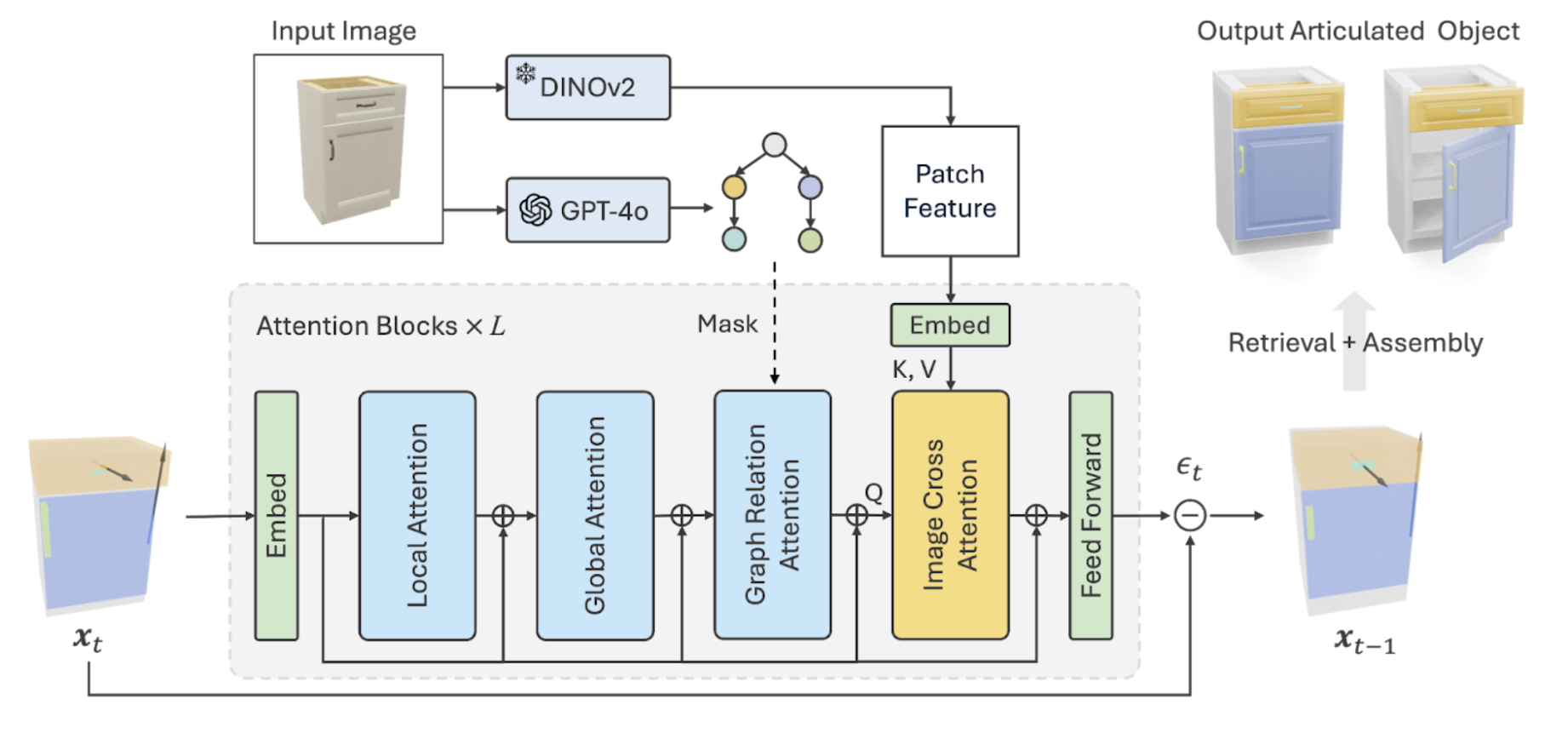[paper review] SINGAPO
Published:
SINGAPO: Single Image Controlled Generation of Articulated Parts In Objects
| Project Page | Arxiv | Code |
- Read ✓✓
- Interests ★★☆☆☆
- Keywords
- 3d generation
- articulated object
- retrieval
Introduction
A method to generate articulated objects from a single image. Designed a pipeline that produces articulated objects from high-level structure to geometric details in a coarse-to-fine manner, where we use a part connectivity graph and part abstraction as proxies.
Motivation and contributions
- recent line of works
- reconstructs articulated objects from images or videos that capture the object from multi-views or multiple articulated states.
- aims to generate articulated objects either unconditionally or guided by high-level constraints
- So, in this work, tried to address
- use single arbitrary view image as input
- modular pipeline to allow more control
Methods
- Input : single resting state image
- Output : retrieved and assembled articulated parts

Goal
generating a set of articulated parts assembling into a 3d object that is geometrically consistent with the input image while being kinematically plausible.
- use the input image to guide the abstract level generation of each part (used diffusion) > this paper focused on this first step.
- fitting part meshes to the generated part arrangement and constructing them into a 3d articulated object (=retrieval)
Datasets
- used PartNet-Mobility (7 categories) , rendered 20 images from random viewpoints + augmentation = 3063 objects paired with 20 images for training and 77 objects paired 2 random views for testing
- ACD dataset to test the generalization capability
Limitations
- tailored to specific object categories (cuboid shapes)
- mesh retrieval falls short in capturing finer geometric details of parts as seen in the input
